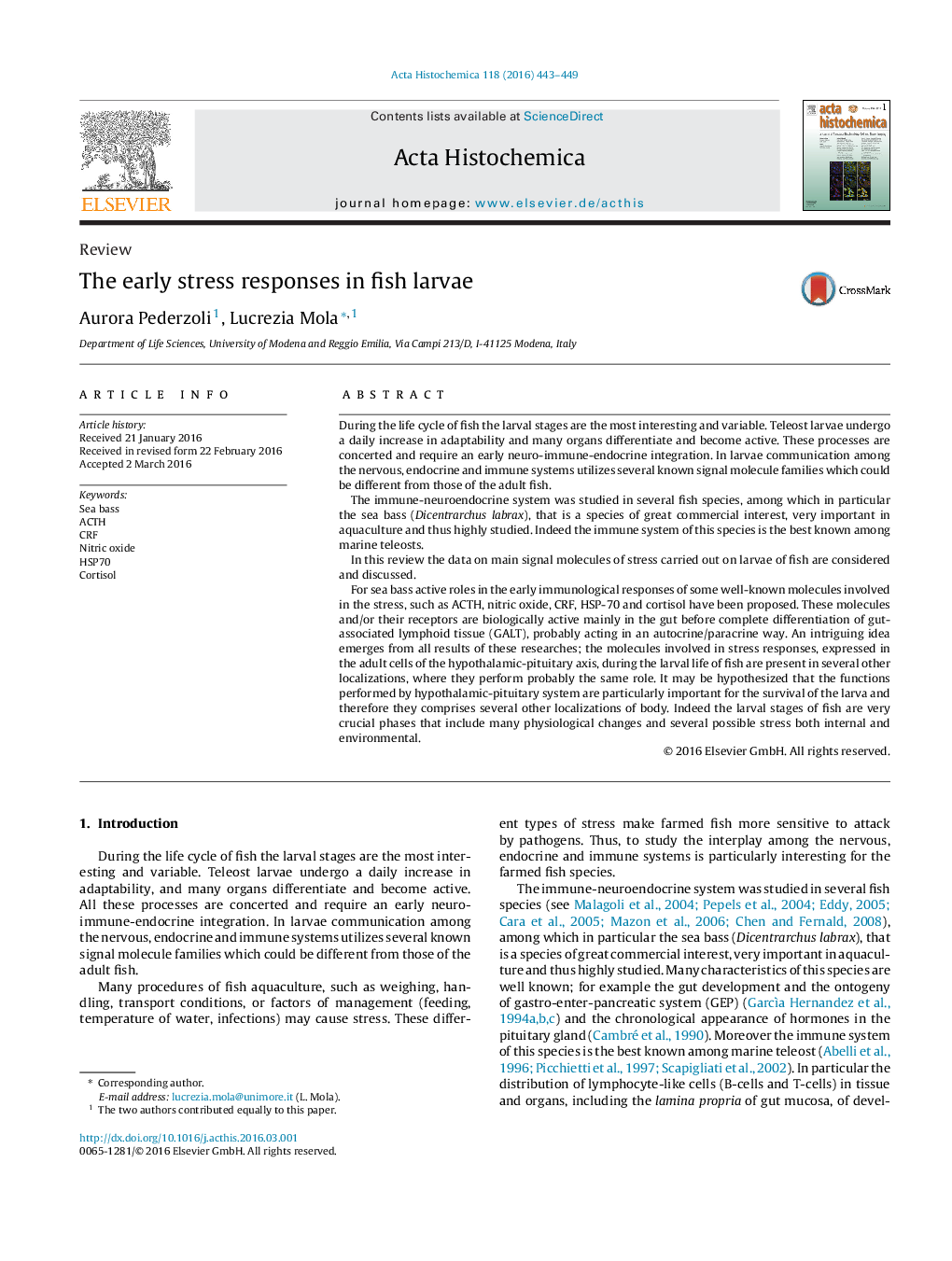| Article ID | Journal | Published Year | Pages | File Type |
|---|---|---|---|---|
| 1923313 | Acta Histochemica | 2016 | 7 Pages |
During the life cycle of fish the larval stages are the most interesting and variable. Teleost larvae undergo a daily increase in adaptability and many organs differentiate and become active. These processes are concerted and require an early neuro-immune-endocrine integration. In larvae communication among the nervous, endocrine and immune systems utilizes several known signal molecule families which could be different from those of the adult fish.The immune-neuroendocrine system was studied in several fish species, among which in particular the sea bass (Dicentrarchus labrax), that is a species of great commercial interest, very important in aquaculture and thus highly studied. Indeed the immune system of this species is the best known among marine teleosts.In this review the data on main signal molecules of stress carried out on larvae of fish are considered and discussed.For sea bass active roles in the early immunological responses of some well-known molecules involved in the stress, such as ACTH, nitric oxide, CRF, HSP-70 and cortisol have been proposed. These molecules and/or their receptors are biologically active mainly in the gut before complete differentiation of gut-associated lymphoid tissue (GALT), probably acting in an autocrine/paracrine way. An intriguing idea emerges from all results of these researches; the molecules involved in stress responses, expressed in the adult cells of the hypothalamic-pituitary axis, during the larval life of fish are present in several other localizations, where they perform probably the same role. It may be hypothesized that the functions performed by hypothalamic-pituitary system are particularly important for the survival of the larva and therefore they comprises several other localizations of body. Indeed the larval stages of fish are very crucial phases that include many physiological changes and several possible stress both internal and environmental.
